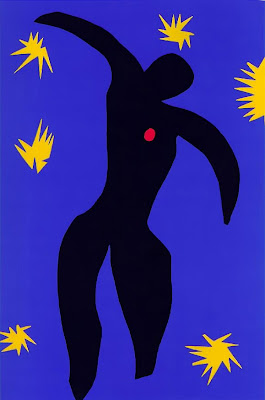
If modern art can be seen as a coin, on one side would be the face of Picasso. On the other, you’d see Henri Matisse. Born December 31, 1869, Matisse represents the brighter side of modernism, full of color and joy, yet still as inventive, experimental, and overflowing as the often angst-ridden, psychologically intense work of Picasso. I remember seeing Matisse’s The Joy of Life (above, from 1905) at The Barnes Foundation and thinking just how exuberant his work could be. “What I dream of is an art of balance, of purity and serenity devoid of troubling or depressing subject matter,” Matisse once said of his art. If Picasso is the mind of modernism, Matisse is its color-drenched soul.

Of course, saying that Matisse is all soul or Picasso all mind is a horrible oversimplification. The composition and rhythm of La Danse (above, from 1909) borrows much from ancient friezes and their celebration of the human form on a flattened plane. Just by looking at the arrangement of limbs and the linking (or not linking) of hands around the circle, you can see Matisse’s mind at work. The fact that he could marry such intense scrutiny to a primal scene of pagan-like ritual attests to the uniqueness of his art. “Drawing is putting a line around an idea,” Matisse once said. Matisse encompassed many ideas in his life and work.

Matisse loved the artists of the past, but never felt intimated by them. “A young painter who cannot liberate himself from the influence of past generations is digging his own grave,” Matisse believed. Although he considered Cezanne “a sort of God of painting,” Matisse flourished rather than shrank under that legacy. Matisse’s Large Reclining Nude (above, from 1935) harks back to the long history of the female nude, especially the odalisques of Ingres, yet adds a totally new chapter to that history. Much of the richness of Matisse’s work comes from this connectedness to the artists of the past as well as contemporaries such as Picasso. Allowing yourself to embrace one of Matisse’s works usually results in being embraced back in the lingering warmth of the spirit of the master that created them.

Even when Matisse could no longer hold a paintbrush, he continued to create in color. His series of cut paper figures called Jazz, including Icarus (above, from 1947), provided Matisse with the luxury of working in pure, saturated color the way a sculptor worked in pure stone. “There are wonderful things in real jazz, the talent for improvisation, the liveliness, the being at one with the audience,” Matisse once said, sharing in that spirit in all his works, but perhaps most powerfully in these late cutouts, which remind me of the last great performances of an aged jazz musician—no longer the young lion but still the king of the jungle. Matisse played a joyful song all his life, and the melody lingers on.




No comments:
Post a Comment